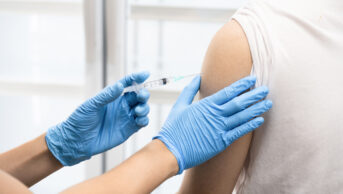As almost everyone in the business of caring for the health of humans and animals is acutely aware, on our current trajectory, it is estimated that antimicrobial resistance (AMR) will cause 10 million deaths annually by 2050, with many arising from simple infections following routine operations. This is why the UK government has placed antimicrobial resistance at the top of its risk register alongside terrorism and pandemic influenza.
Bacterial resistance to antibiotics is farming’s biggest current concern. Although resistance issues within the human population are largely developing through medical use, we cannot ignore the fact that almost 40% of the UK’s antibiotic sales are used to treat disease and illness in UK livestock farming, where more than a billion animals are reared and managed every year.
Evidence currently suggests that, although AMR and its potential transmission to humans from farm animals is a concern, the risk of illness as a result remains low. For instance, tests on resistance gene samples in Europe indicate farm animal use is potentially associated with fewer than 1% of human clinical Escherichia coli infections. But we must accept that, in some cases, resistant bacteria and the mechanisms that cause resistance could pass from animal to human, as well as cause significant problems in the animals themselves.
There is no perfect solution to combat this. Resistant bacteria are found on large and small farms, organic and conventional, as well as in pets and horses. ‘Antibiotic-free’ is not an answer. Such labels imply that other products, by default, contain antibiotics, when antibiotics as growth promoters have been banned in the EU for more than 10 years and all use of antibiotics in farm animals in the UK is strictly regulated with withdrawal periods to avoid presence in meat and milk.
Banning preventative use or access to critically important antibiotics could be equally counterproductive. We are seeing some innovative approaches emerging in animal medicine to reduce long-term requirements to use antibiotics. These can include medical elimination of certain diseases, such as enzootic pneumonia, which require both an intensive course of preventative treatment and use of critically important antibiotics.
However, sharing knowledge on how to upgrade facilities, improve immunity, lower disease burden and treat animals more effectively so that reduction, refinement and replacement of antibiotics in farming can be achieved without compromising welfare makes more sense. This is what is meant by ‘responsible use’ – an approach championed by the Responsible Use of Medicines in Agriculture Alliance (RUMA) for the past 20 years through best-practice guidelines and a science-based approach.
Each farming sector will need to tackle this in a different way because they all face their own challenges and opportunities. Following the publication in May 2016 of the O’Neill report on ‘Tackling drug-resistant infections globally’, RUMA announced it was setting up a targets task force to look at how meaningful and co-ordinated objectives could be developed for each of our livestock sectors.
Several months on and things are looking good. Recently published 2015 data show UK farmers and veterinarian surgeons were already responding to the challenge, with a 10% fall in sales of antibiotics for food-producing animals. The first targets task force workshop has taken place, defining a co-ordinated strategy and aiming to meet every two months throughout 2017 to support each sector as it defines objectives.
Meanwhile, the poultry meat industry has illustrated just what can be achieved, cutting overall antibiotic use by 43% over the past five years and voluntarily banning many critically important antibiotics. Late last year it announced that poultry meat companies had stopped prophylactic use of all antibiotics.
The pig sector is also responding. In 2015, sales of antibiotics licensed only for pigs fell by 25%, and those licensed for pigs and poultry by 10%. Having launched its antibiotic stewardship programme earlier in 2016, records covering around one-fifth of finished pigs have now been entered on to a new industry database.
With a more complicated structure and many smaller producers, the cattle and sheep sectors are looking at the ‘hot spots’ for antibiotic use — for example, how to manage dairy cows during their ‘dry’ period so they do not develop mastitis, and how E.coli infection can be avoided at lambing time. Some of these activities can be seen on the Farm Antibiotics information website.
The best news is that all these changes are evidence-based and are being carefully implemented by specialists. The farming and veterinary communities accept that they, alongside human medical communities, need to get to grips with this problem. But there is no room for knee-jerk reactions and marketing ploys where both animal welfare and human health are at stake.
Rob Morris
Chair
Veterinary Pharmacy Forum of the Royal Pharmaceutical Society
Gwyn Jones
Chair
Responsible Use of Medicines in Agriculture Alliance
You may also be interested in
What are the views of the RPS and Pharmaceutical Press on AI training using copyrighted materials?

HIV patients should switch to long-acting antiretroviral injectable treatments sooner, study concludes
